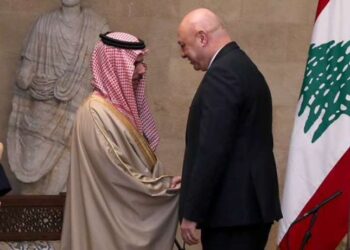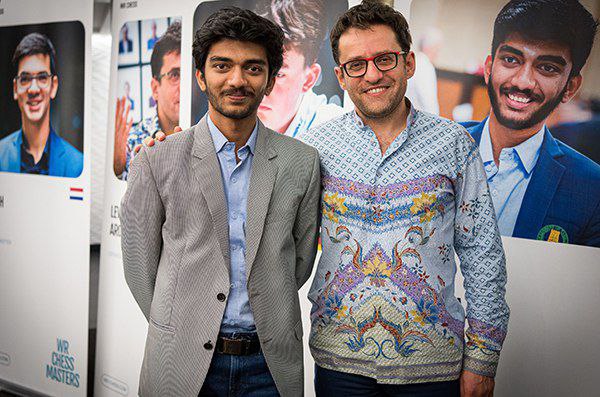By Davit Safaryan
Special to the Mirror-Spectator
Armenian-Turkish and Armenian-Azerbaijani negotiations have acquired a new tempo. Both normalization processes take place with the background of increasingly intense geopolitical rivalry, which makes us follow the situation in the South Caucasus with growing anxiety. In this analytical essay, we present our observations concerning the two directions of negotiations, which, as we understand it, are by and large intertwined and have an objective of creating a new reality in the South Caucasus.
The Logic of the Current Process of Armenian-Turkish Normalization
Armenian rescuers known for their technical skills and good physical training had taken part in the efforts to ease the aftermath of the recent disastrous earthquake in Turkey. This step gave rise to controversial responses both in Armenia and Turkey. Critics of the Armenian authorities said that there was no need to send such demonstrative and numerous condolences and such a long life-saving mission to Turkey. On the other hand, the Turkish authorities assisted in creating some positive atmosphere on that issue, which was certainly psychologically favorable in the sense of bringing some warmth into the atmosphere of Armenian-Turkish negotiations.
It seems that the conversation of the two negotiators aimed at the establishment of diplomatic relations has continued from the point where it was terminated in 1920-1921 – the Alexandropol Treaty of December 1920 and the Moscow Treaty of March, 1921, which shaped the realia ruling now in South Caucasus. Seventy years of existence of the former Soviet Union plus thirty post-Soviet years make a century of almost no relations between Armenia and Turkey on the state level. Following the Soviet tradition, the Armenian-Turkish frontier is still guarded by Russian border patrol with the participation of Armenian colleagues. In our previous articles we wrote that with the escalation of the First Artsakh War in the spring of 1993 the Turkish government had unilaterally closed the Armenian-Turkish border and prohibited any imports from Armenia. Since that period to the present day Armenian-Turkish trade relations were limited to the unilateral import of Turkish goods to Armenia, the real volume of which is still unknown. In view of this special envoys of Armenia and Turkey agreed to partially open border communications with the reservation that presently the border may be crossed only by third country citizens and persons with Armenian and Turkish diplomatic passports. Thus, the border shut since 1993 has been partially opened.
The other noteworthy agreement referred to the reconstruction of the presently ruined medieval bridge of Ani across the bordering Akhurian River, through which Armenian and foreign tourists may enter the site of Ani. It is worth mentioning that while signing the Kars Treaty of 1921 the Armenian delegation asked the Turkish negotiators to consider their request of leaving Ani and Mount Ararat to Armenia, but as we know the Great National Assembly of Turkey had sharply rejected that plea. Presently, when Armenian alpinists desire to climb Mount Ararat, they enter Turkey from Georgia and ascend the mount by tested routes. Opening Ani for foreign tourists visiting Armenia is a new step presented to public opinion as boosting tourism.
In general, the atmosphere of these negotiations seems to show that each following step may be accompanied by more delays and difficulties because we are sure that the Turkish authorities would rather wait for the time when Armenia and Azerbaijan sign an agreement. We have already drawn the attention of our readers to the fact that the Armenian-Turkish negotiations held in 2008-2010 during the “Football Diplomacy” failed for the simple reason that Azerbaijan was resolutely against any normalization until there was a positive result in the Nagorno-Karabakh negotiations. Currently while Armenia and Azerbaijan are still negotiating, Turkey is waiting for some tangible result and does not wish to cause anxiety to its “brother” and comrade-in-arms. Thus, it may be stated with certainty that the meetings and discussions of the Armenian and Turkish envoys would be long-lasting unless negotiations between Armenia and Azerbaijan achieve some progress.
The Process of Armenian-Azerbaijani Negotiations and Factors of Influence
The secretary of Armenia’s National Security Council recently informed that the preparation of the peace treaty draft between the two countries is in progress. Armenia has received the latest text of the Azerbaijani proposals and is working on it in order to send it back to the Azerbaijani side in due time. Generally, the situation during the weeks after the September armed confrontation when Armenia lost over two hundred servicemen at its frontiers is still very tense. Many Armenian experts consider that new armed conflicts are highly plausible. Most probably the keen interest and recommenced efforts of the international community to revive the negotiation processes are aimed at preventing the resumption of new conflicts.
It was considered in Armenia that it might rely on the support of the Collective Security Treaty Organization (CSTO) as the Azerbaijanis intruded onto sovereign Armenian territory. It turned out that at least three of the six members of that organization were much closer to Azerbaijan than to Armenia, a member of this organization, while Russia, being the strategic ally of both states, could not or would not aggravate its relations with either of them. Under these conditions, with no support expected from the CSTO, Armenia turned to the West. France promised to send a civilian observation mission consisting of 300 gendarmes, and other EU members promised to send 100 civil observers to Armenia.
In his turn, the prime minister of Armenia declared that Armenia would not provide its territory to CSTO for regular drills planned for 2023, so the CSTO resolved to conduct its military drills in Kirgizstan. In this situation, the CSTO tried to correct its mistakes by declaring its readiness to send observers to the Armenian-Azerbaijani border. The presence of the Western observers on Armenia’s borders has caused great anxiety in Azerbaijan, whose politics and strategy was based on representing Armenia in Russia as a pro-Western state, and as an incorrigibly pro-Russian state in the West. The question that now became the most troubling for Yerevan analysts was what final decision the Armenian authorities might make between the Russian and European observers to be placed along the Armenian borderline. The further development of allied relations with Russia or the newly warming and deepening ties with the EU and US would depend on it. As making various assumptions and discussing different scenarios of development seems quite untimely, we’d rather wait and see in order to receive exact answers to these questions.
Possible Role of the US and European Union in the Process of Settlement
We should understand that the international community has no essential controversies on the further settlement of the Nagorno Karabakh conflict. It is extremely important that the US secretary of state seated the leaders of Armenia and Azerbaijan at the negotiating table in Munich. It means that the United States has not washed its hands of the responsibility of settling this conflict and is ready to continue its mediation efforts between the two countries. This news is also important because the US representatives still considered the Organization for Security and Cooperation in Europe (OSCE) as a platform where the process of the Nagorno Karabakh conflict settlement is being discussed. Russia insists that it has the best ability to successfully mediate between Azerbaijan and Armenia and assist, based on its military maps, in border delimitation and demarcation works. We know that the leaders of the European Union also declared about their readiness to help during delimitation and demarcation works. Even at a time when international relations are so intricate and complicated, with the inaction of the OSCE Minsk Group, the US, EU and Russia may continue their efforts for compelling Armenia and Azerbaijan to sign a peace treaty. Inviting these major mediators to Armenia and relying on their multilateral assistance, Armenia will try to compensate for its vulnerable position existing since its defeat in the 44 Days War of 2020.
Another important issue is removing the Azerbaijani blockade of the Lachin corridor connecting Armenia and Artsakh, which requires huge efforts from and creates tension for Armenia. Despite the numerous assurances of different parties and diplomatic circles that the blockade will be soon lifted, no real steps have been taken yet and it is unclear whether they ever will be. Artsakh is surviving under conditions of blockade without any panic, as ensured by their political leaders. But this reality comes to prove that the future political status of Artsakh is not as topical now as the protection of human rights and prevention of a new genocide, which is presently a matter of extreme urgency.
The Armenian Mirror-Spectator















